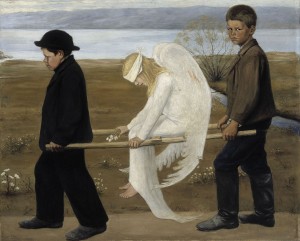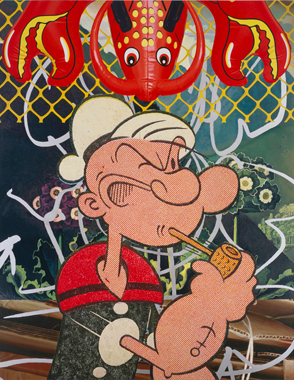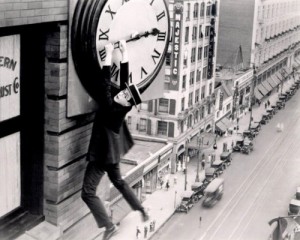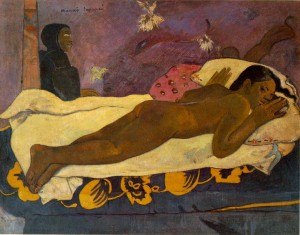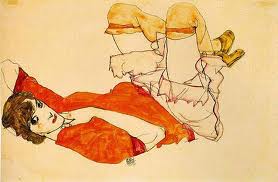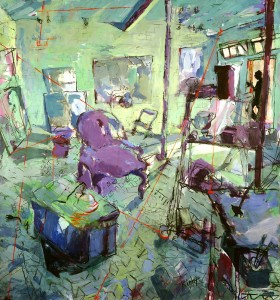Tragedy
This post of Kirby Kendrick’s art blog is respectfully dedicated to the people who experienced the tragedy at Aurora, Colorado on Friday, June 20, 2012.
The Wounded Angel is considered Finland’s “national painting.” The injured angel clutches a bouquet of Snowdrops, symbolic of healing and rebirth.
Super Art!
Bright yellow hats, swirling red capes, skin tight blue body suits, bulging muscles…
Comic book artists gave conservative, Great Depression-burdened America a kick in the art pants in the late 1930’s!
Many a fine artist today owes their extraordinary use of color and dynamic composition to the influence of comic book artists. Check out Jeff Koons, Andy Warhol and Roy Lichtenstein.

"Superman 260" (1981)
Andy Warhol (1928-1987)
Color screenprint with diamond dust on
Lenox museum board
Superman! From the planet Krypton? Or from the imaginations of two Jewish teenage boys in Cleveland, Ohio in 1936. World War II was on the horizon and the boys were horrified by reports of the evils of Hitler.
Superman was born! The mild mannered Clark Kent transformed into a captain of truth who defended the weak and battled to save the world from destruction. Superman’s young creators, Jerry Siegel and Joe Shuster designed his costume bright blue with a red cape to show the illusion of flying. (Artists, take note!)
After years of rejections by comic book publishers, DC Comics bought the rights to Superman for a modest $130.
America entered World War II. Jerry Siegel was drafted and served in the US Army, came home and found that Superman was the comic hero of America!
In 1970, after years of litigation, Siegel and Shuster were acknowledged by DC Comics as Superman’s creators and were each awarded $20,000 a year in royalties for the rest of their lives as compensation.
Vintage Superman video… It’s REALLY super!
Click this link if unable to view the video.
_______________
It’s 1938. The Great Depression is raging. Americans are desperate.
E.C. Segar, Illinois cartoonist, creates Popeye! Popeye flexes his muscles and eats spinach. There are no obstacles that can not be overcome. He is strong and sympathetic. He is funny.
America’s gloom is lifted.
American children’s spinach consumption increases by 33%.
_______________
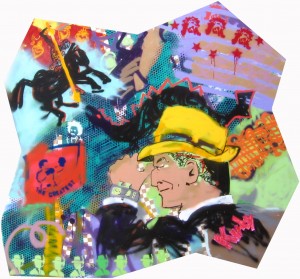
"KA-POW! - Dick Tracy" (2011)
Kirby Kendrick (alive and kickin')
Spray paint, markers, stencil, acrylic on canvas
Chicago, 1930. Violence ran amuck. Al Capone, arch gangster was terrorizing Chicago. Something had to be done.
Dick Tracy was created by cartoonist Chester Gould. Dick Tracy fought crime with his wits and advanced gadgetry. Right was right and wrong was wrong.
And America loved the colors of his costume…yellow hat, red and white striped tie, and jet black suit.
Art could be colorful again.
Couples
Husband and wife were united for eternity in their tomb in Giza, Egypt. In 1907, the tomb was excavated and the lovely 20-inch high clay statues were given a permanent place of honor in the Louvre in Paris, France.
An outstanding example of ancient Egyptian burial portraiture, Raherka is painted an earthy red and his wife, Meresankh is rendered in a yellow tone…coloring considered ideal at the time. The wigs and eye lines are painted black.
Look at Raherka and Meresankh’s faces. They are painted without human flaws and are devoid of expression. We have no clue to their personalities or individuality. The ancient artist didn’t want to give us a clue. Belief was that the deceased had to be beautiful and without physical imperfections in order to be guaranteed eternal life after death.
The faces may be devoid of emotion, but the body positions are tender and affectionate. Meresankh’s arm is across her husband’s chest…intimate and protective.
Love is indeed eternal.
_______________
Grant Wood’s painting of this Iowan farmer and his wife caused quite a commotion in 1920! The local Iowans were furious at their depiction as “pinched grim-faced puritanical Bible-thumpers.”
Art critics who had favorable opinions about the painting assumed the scene was meant to be a satire of rural small-town life described in literature of that time.
Yet another interpretation saw it as an “old-fashioned mourning portrait. Notice the curtains hanging in the windows of the house, both upstairs and down, are pulled closed in the middle of the day, a mourning custom in Victorian America. The woman wears a black dress beneath her apron, and glances away as if holding back tears. One imagines she is grieving for the man beside her…Wood had been only 10 when his father died. Later he lived above a garage reserved for hearses…so death might have been on his mind.”
With the onset of the Great Depression, the painting came to be seen as a depiction of steadfast American pioneer spirit.
Is there yet another interpretation as we plummet headlong into the technological age? Scroll down and leave us a comment.
_______________
A Botero painting is instantly recognizable! All his people are hugely disproportionate. The women are voluptuous and Rubenesque and the men resemble baby elephants.
Although we may see a comical, folk-flavored style to his work, underlying that, Botero is quite serious.
He grew up in Colombia, a country that has been riven by social strife, civil war, and drug trafficking.
When Botero’s son, Pedro, was born in 1970, the paintings focused on phases of family life, from birth to courtship to death.
Personal tragedy struck when Pedro died at four years of age in a car accident in which the artist himself was also injured. He then turned to sculpture, and to religious and political paintings.
In 2007, Botero painted eighty-five works exploring the reports of abuses of prisoners at Abu Ghraib Prison during the Iraq war. They were exhibited in Europe and two locations in the United States, including Washington, DC.
Botero’s art is collected by major museums, corporations and private collectors.
Time is Art — “The Clock”…a masterpiece
An extraordinary video installation touring the U.S. and Europe is knocking the socks off the art world and critics are calling it a modern masterpiece!
“The Clock,” by artist Christian Marclay, is a 24-hour-long film consisting of over 3,000 old and brand new movie clips spliced together. In each film clip a clock appears or someone refers to time…the time in the film and the real time according to our watches!
The edited film clips don’t tell a conventional story. Yet, there is a story. It is about being aware of time…all the time.
“The Clock” is shown in an art gallery or art space (coming this summer 2012, to the Lincoln Center in New York City). Comfy couches are arranged in front of a large screen. The film runs 24 hours continuously. You can stay as long as you like.
As one critic said, “Looking at a clock for hours a day? What a drag. But, oh, after 3 hours I could barely tear myself away. I didn’t want to leave. I came back the next day! The line was around the block.”
What is so fascinating is how the film touches on our anxiety over time. We know time is passing and to some extent feel its tyranny.
The fictional characters in the film make us very aware of this passing of time.
For instance, at 12:27 A.M., there is a clip of a resplendently dewy Catherine Deneuve, then twenty-one years old, from “Repulsion.” Four hours later, she’s three decades older, in “My Favorite Season,” an embittered wife intentionally knocking a clock off a fireplace.
At 1:51 A.M. Jack Nicholson is a frantic juvenile delinquent in “The Cry Baby Killer,” at 4:59 P.M. he is the paunchy and bald hero of “About Schmidt,” gazing at his office clock as he dully awaits retirement.
Keep in mind that when we see Nicholson looking at his office clock at 4:59 P.M. in the film clip, it truly is 4:59 P.M. in our real time…by our watches. Time in “The Clock” corresponds with our local time. It has only been 3 hours and 8 minutes since he was the juvenile delinquent in the film. But we know it has really been 55 years. We become wide awake to Deneuve and Nicholson’s mortality…and hence, our own.
That is what is so captivating about “The Clock.” The segments of film are married up to the great themes in life…love, death and the meaning of our lives.
Take a few minutes (pun intentional!) to view this great clip of “The Clock.”
Click this link if unable to view the video.
Dark Moments…Great Painters
Ever wondered why we are fascinated and confused by beautiful paintings that have ominous images?
Brain researchers in the field of Neuroscience have increasingly turned their eyes on art in an effort to understand how we see these works of art.
There is a deep portion of the brain, the amygdala, which triggers BOTH negative & positive emotions. So when we see a frightening image surrounded by beautiful bright complimentary color, the brain is perturbed. We hate it but we love it! What’s a brain to do?!
Paul Gauguin and Egon Schiele perhaps unconsciously combined the beautiful with the sinister.
Gauguin was a brilliant artist who is called The Father of Modern Art. He was also a pretty nefarious character deserting his wife and children so he could live in “ecstasy, calmness and art” on the island of Tahiti.
In the above painting, notice the sinister figure in the background. Kinda scary, huh? But, oh, what gorgeous color!
_______________
A melancholy eccentric, Egon Schiele (Austrian), often drew his models from the top of a ladder looking down capturing unusual, arresting compositions.
Look at the contorted, twisted figure in Egon Schiele’s drawing. The expression on the face is…confused? Angry? Sad? Yet the figure has a certain innocence and the combinations of color are thrilling!
_______________
A less noted artist (readers laugh!), your devoted blogger also discovered some sinister figures in her past work. See the threatening dark figure in the upper right-hand corner? Where did HE come from? What’s HE doing?
Question:
We know what the neuroscientists have to say about our brain and why we like these dark/light images; do you have any thoughts on why these images fascinate us? Leave a comment below.

